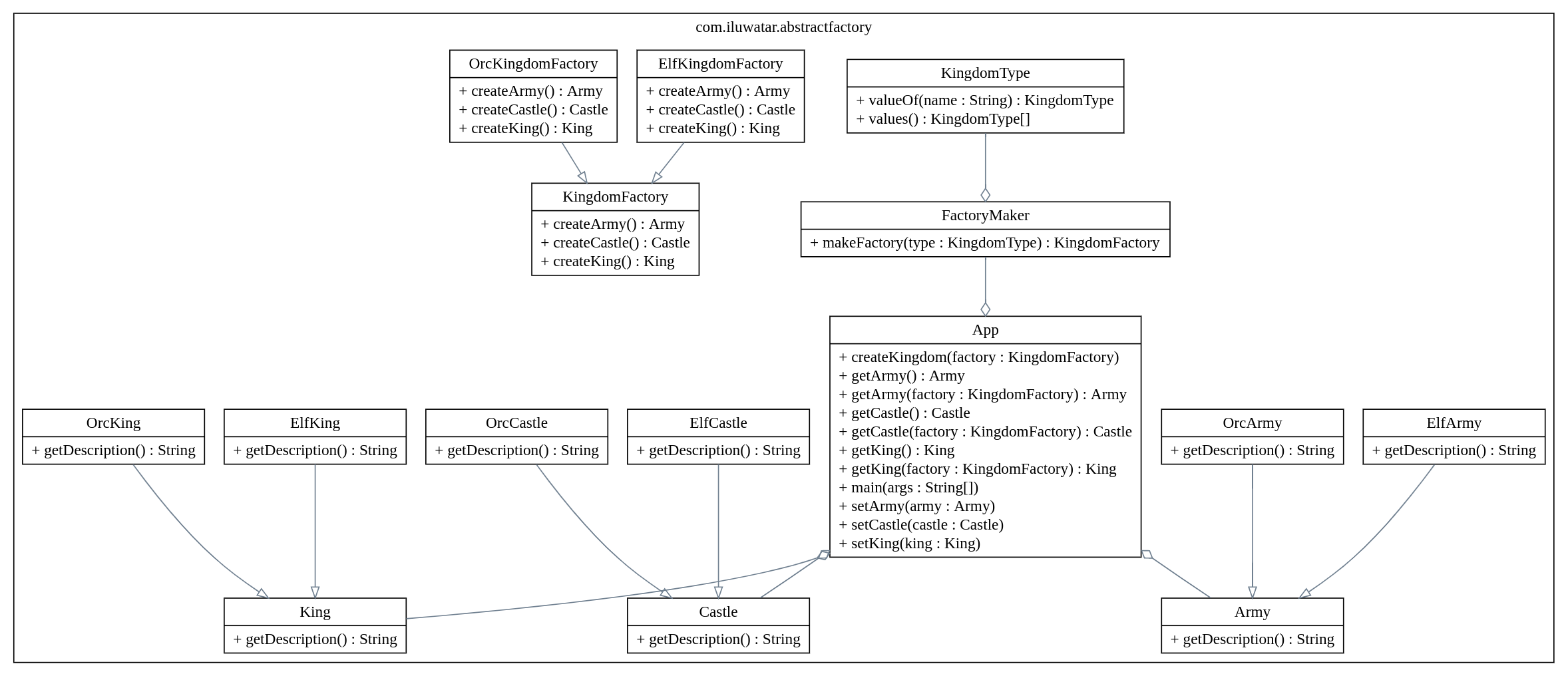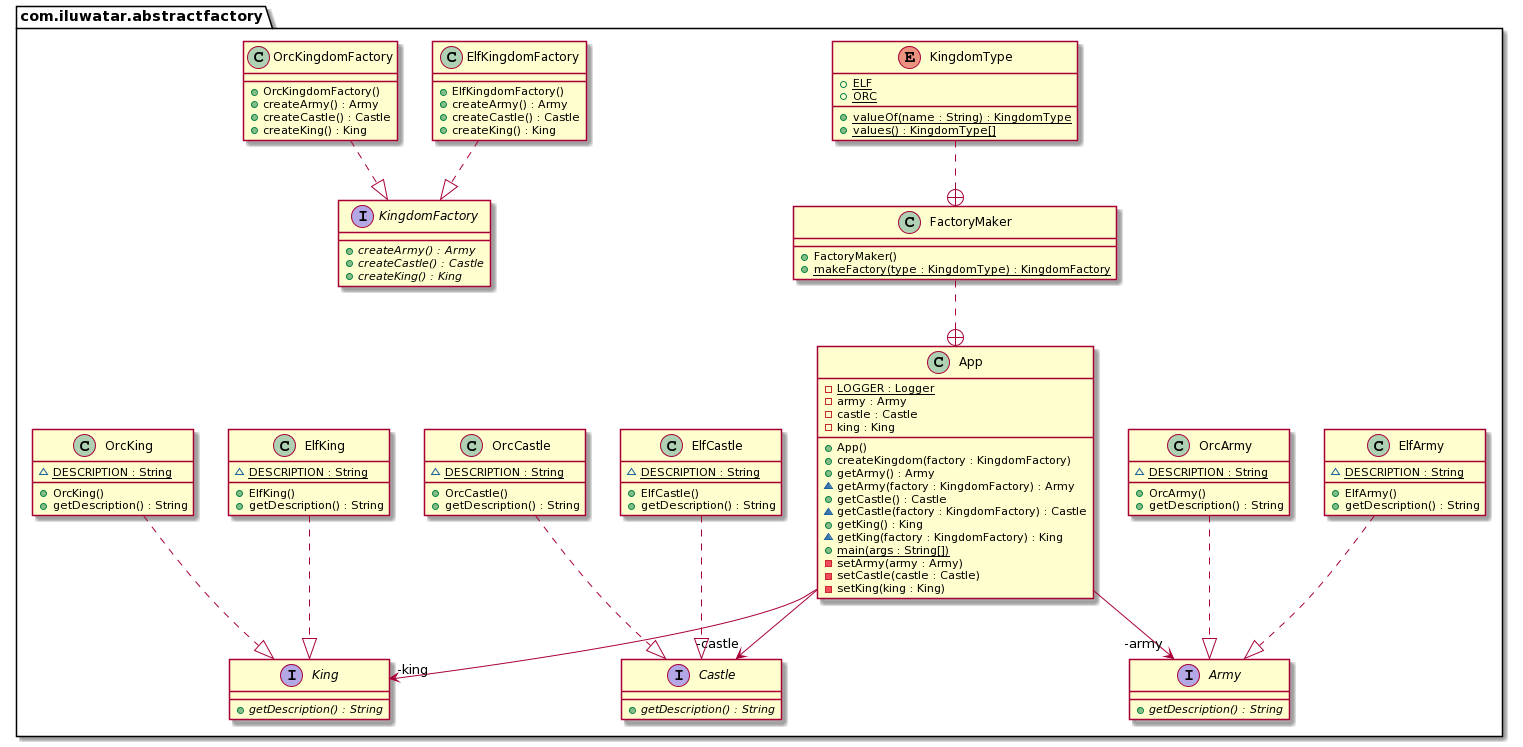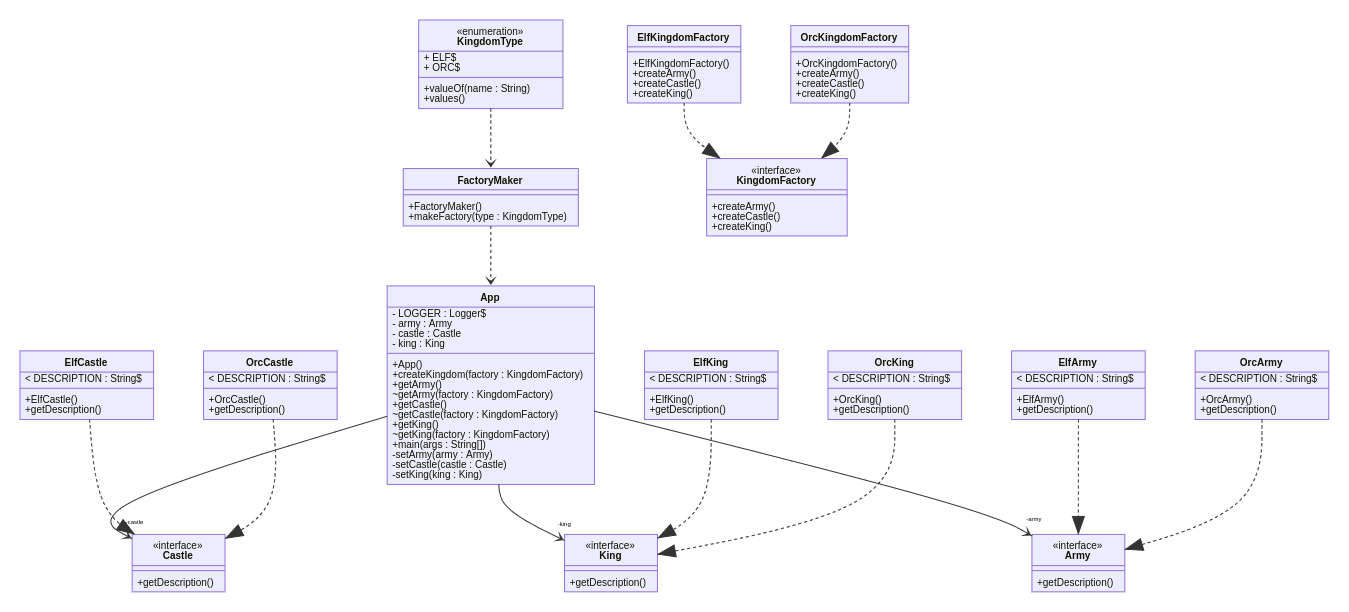Automatically generate class diagram from your code.
Using reflection, UML Reverse Mapper scans your packages that contain your code. It builds the class relations and can output as a Graphviz .dot file, a PlantUML .puml file or a Mermaid .mmd file.
The tool is available in command line version (urm-core) and Maven plugin (urm-maven-plugin).
Build the urm-core project with ./mvnw clean package and grab the generated artifact urm-core.jar. Then you need the archive that will be analyzed. In this example we use abstract-factory.jar and assume the package name to be com.iluwatar.abstractfactory. Place the jar-files in the same directory and execute the following command.
java -cp abstract-factory.jar:urm-core.jar com.iluwatar.urm.DomainMapperCli -p com.iluwatar.abstractfactory -i com.iluwatar.abstractfactory.Castle
This will scan all the classes under the package com.iluwatar.abstractfactory except Castle that was marked to be ignored and output the markup to your console output. By default PlantUML presenter is used, but it can be changed with switch -s graphviz or -s mermaid. If you want to write it to file use switch -f filename. If you need to scan multiple packages use format -p "com.package1, com.package2". Note that under Windows OS the classpath separator is ; instead of :
Add to your pom.xml the following:
<build>
<plugins>
<plugin>
<groupId>com.iluwatar.urm</groupId>
<artifactId>urm-maven-plugin</artifactId>
<version>2.1.1</version>
<configuration>
<!-- if outputDirectory is not set explicitly it will default to your build dir -->
<outputDirectory>${project.basedir}/etc</outputDirectory>
<packages>
<param>com.mycompany.mypackage</param>
<param>com.mycompany.other_package</param>
</packages>
<ignores>
<param>com.mycompany.mypackage.MyClass</param>
<param>com.mycompany.other_package.OtherClass</param>
</ignores>
<includeMainDirectory>true</includeMainDirectory>
<includeTestDirectory>false</includeTestDirectory>
<presenter>graphviz</presenter>
</configuration>
<executions>
<execution>
<phase>process-classes</phase>
<goals>
<goal>map</goal>
</goals>
</execution>
</executions>
<dependencies>
<dependency>
<groupId>com.example</groupId>
<artifactId>example</artifactId>
<version>1.0.0</version>
</dependency>
</dependencies>
</plugin>
</plugins>
</build>packagesconfiguration parameter contains a list of packages that should be included in the class diagramignoresconfiguration parameter contains a list of types that should be excluded from the class diagramdependencieslist should contain the artifacts where the classes are found. See https://maven.apache.org/guides/mini/guide-configuring-plugins.html#Using_the_dependencies_TagincludeMainDirectoryconfiguration parameter indicates to include classes of src/main/java directory. Default value ofincludeMainDirectoryis true.includeTestDirectoryconfiguration parameter indicates to include classes of src/test/java directory. Default value ofincludeTestDirectoryconfiguration parameter is false.presenterparameter control which presenter is used. Can begraphviz,plantumlormermaid.
When process-classes life-cycle phase gets executed, the class diagram will be saved to the location specified by outputDirectory parameter. If not specified the file is saved
to /target/${project.name}.urm.<ext>, where is one of dot (graphiv), puml (plantuml), or mmd (mermaid). Use this file with your local
or online tools to show your class diagram.
Here are some class diagrams generated with the urm-maven-plugin.
Performing a Release Deployment
export GPG_TTY=$(tty)
./mvnw clean deploy -P release


